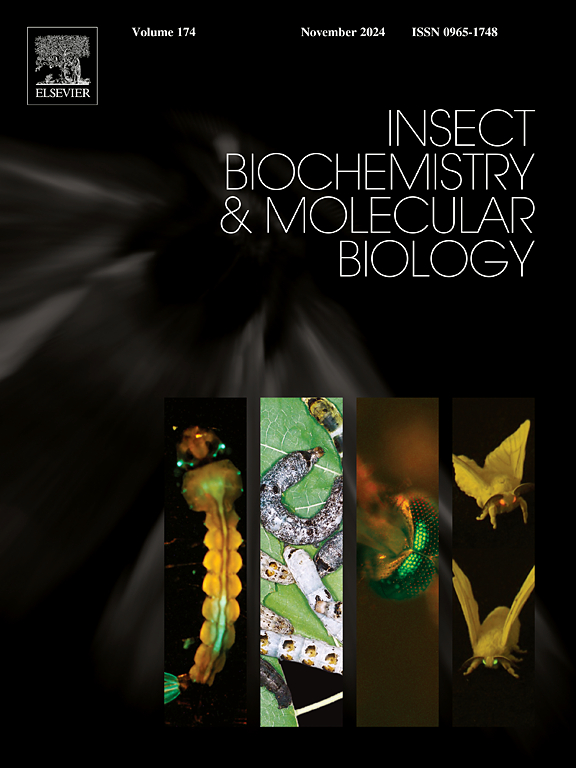利用piggyBac转座子系统对西尼罗河病毒和禽疟媒介致倦库蚊进行种系转化。
IF 3.7
2区 农林科学
Q2 BIOCHEMISTRY & MOLECULAR BIOLOGY
引用次数: 0
摘要
致倦库蚊是一种蚊子,在广泛的地理范围内作为许多疾病的媒介,包括西尼罗河病毒、淋巴丝虫病和禽疟。随着杀虫蚊虫控制方法的有效性下降,开发基因控制方法以遏制疾病传播的需求日益增长。piggyBac转座子系统——在包括蚊子在内的昆虫中使用最广泛的遗传转化工具——产生准随机的供体DNA插入宿主基因组。然而,尽管piggyBac的物种范围广泛,但之前使用该工具改造致倦库蚊的尝试都失败了。在这里,我们报道了第一个成功转化为piggyBac转座子系统的致倦库蚊。使用商业合成的piggyBac mRNA作为转座酶源,我们能够生成三个独立的ZsGreen荧光标记基因插入,转化效率高达5%。通过这项工作,我们扩大了可用于库蚊遗传操作的遗传工具包,从而消除了在这一重要病媒中开发新的遗传控制方法的障碍。本文章由计算机程序翻译,如有差异,请以英文原文为准。

Germline transformation of the West Nile virus and avian malaria vector Culex quinquefasciatus Say using the piggyBac transposon system
Culex quinquefasciatus Say is a mosquito which acts as a vector for numerous diseases including West Nile virus, lymphatic filariasis and avian malaria, over a broad geographical range. As the effectiveness of insecticidal mosquito control methods declines, the need has grown to develop genetic control methods to curb the spread of disease. The piggyBac transposon system - the most widely used genetic transformation tool in insects, including mosquitoes - generates quasi-random insertions of donor DNA into the host genome. However, despite the broad reported species range of piggyBac, previous attempts to use this tool to transform Culex quinquefasciatus mosquitoes have failed. Here we report the first successful transformation of Culex quinquefasciatus with the piggyBac transposon system. Using commercially synthesised piggyBac mRNA as a transposase source, we were able to generate three independent insertions of a ZsGreen fluorescent marker gene, with transformation efficiencies of up to 5 %. Through this work, we have expanded the genetic toolkit available for the genetic manipulation of Culex mosquitoes and thus removed a barrier to developing novel genetic control methods in this important disease vector.
求助全文
通过发布文献求助,成功后即可免费获取论文全文。
去求助
来源期刊
CiteScore
7.40
自引率
5.30%
发文量
105
审稿时长
40 days
期刊介绍:
This international journal publishes original contributions and mini-reviews in the fields of insect biochemistry and insect molecular biology. Main areas of interest are neurochemistry, hormone and pheromone biochemistry, enzymes and metabolism, hormone action and gene regulation, gene characterization and structure, pharmacology, immunology and cell and tissue culture. Papers on the biochemistry and molecular biology of other groups of arthropods are published if of general interest to the readership. Technique papers will be considered for publication if they significantly advance the field of insect biochemistry and molecular biology in the opinion of the Editors and Editorial Board.

 求助内容:
求助内容: 应助结果提醒方式:
应助结果提醒方式:


